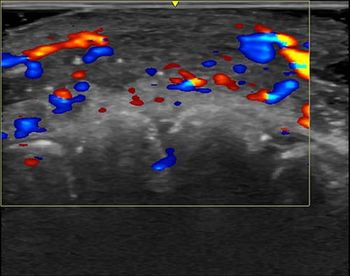
Philips applies MRA at mid-field
Philips Medical Systems has installed the first magnetic resonanceangiography package for its 0.5-tesla Gyroscan T5 magnetic resonanceimaging system. The premier North American clinical test siteis New Britain General Hospital in New Britain, CT.The
Philips Medical Systems has installed the first magnetic resonanceangiography package for its 0.5-tesla Gyroscan T5 magnetic resonanceimaging system. The premier North American clinical test siteis New Britain General Hospital in New Britain, CT.
The vendor will show initial results from this mid-field MRAsite at the Society for Magnetic Resonance Imaging conferencein Chicago next week, said Joseph Vacca, director of MRI.
Preliminary experience with MRA on the mid-field scanner indicatesthat sufficient diagnostic information is being provided, althoughhigh-field MRA may have shorter imaging times and better signal-to-noise,he said. Philips has developed its MRA package to run on boththe T5 and its 1.5-tesla Gyroscan S15/ACS unit. The software isalso available for older S15 systems with a high-performance upgrade.
Philips offers what it calls a "Siamese" programfor mid-field and high-field MRA, Vacca said.
"All the (MRA) software we will develop for ACS will workon the T5, and everything developed for the T5 will work on theACS. We have to let the customers decide where it works best.Let the chips fall where they may," he said.
MRA techniques were originally thought to be limited to high-fieldscanners with sufficiently strong signals. But a number of MRvendors, including Philips, Toshiba and Resonex, discussed researchin mid-field MRA at the Radiological Society of North Americaconference in November.
Philips has seen significant improvement in the quality ofits mid-field MRA images since the RSNA meeting and expects furtherimprovement as it continues to adjust pulse sequences on the T5for optimization of MRA, Vacca said.
Radiologists, in fact, are coming to expect MRA features onmid-field systems, he said.
"It is getting to the point where one of the decidingfactors physicians use when looking at an MR system is its abilityto do angiography. They seem to use it as a way of checking whethera system has high signal-to-noise and can produce good images,"he said.
MRA and other developments in magnetic resonance imaging, suchas fast scanning, are increasing the attractiveness of this imagingmodality to cardiologists. This could provide a substantial newmarket for MRI systems, Vacca said.
Newsletter
Stay at the forefront of radiology with the Diagnostic Imaging newsletter, delivering the latest news, clinical insights, and imaging advancements for today’s radiologists.




























